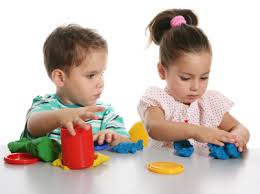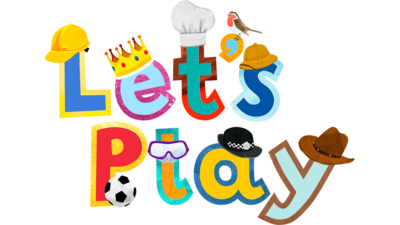Importance of Play
In Design to Learn By: Dynamic Early Learning Spaces in Public Libraries, Sarah Bayliss states,
"A design revolution is reinventing the children’s room in public libraries and changing the way young children learn. The movement involves colorful spaces with mirrors, soft edges, and things to climb on. There are items to play with such as “sentence makers” and audio-based toys. A farmer’s market, cash register, automobile, or airport may be involved. Most importantly, the areas are embedded with tools and features that get kids ready to read."
 Play is also one of the five practices promoted in Every Child Ready to Read @ your library, second edition (ECRR 2). Their workshops highlight the following points for you to share with parents and caregivers:
Play is also one of the five practices promoted in Every Child Ready to Read @ your library, second edition (ECRR 2). Their workshops highlight the following points for you to share with parents and caregivers:
-
Play is one of the best ways for children to learn language and literacy skills.
-
Play helps children think symbolically: a ruler becomes a magic wand, today becomes a time when dinosaurs were alive, and a playmate becomes an astronaut exploring space.
-
Through play, children realize that one thing can stand for another. This also helps children understand that written words stand for real objects and experiences.
-
Not only does pretend play help children learn to think symbolically, this type of play also helps to develop oral language skills. As children play store or pretend to be an animal, they talk about what they're doing. They practice putting thoughts into words.
-
Dramatic play helps develop narrative skills as children make up a story about what they're doing. This helps them understand that stories happen in an order: first, next, last.
-
Make-believe also gives children a chance to act out real-life situations, work through worries and fears, and use their imagination to solve problems.
-
Play helps children feel a sense of accomplishment and self-confidence. This motivates them to try new experiences and to not give up when something seems difficult.

